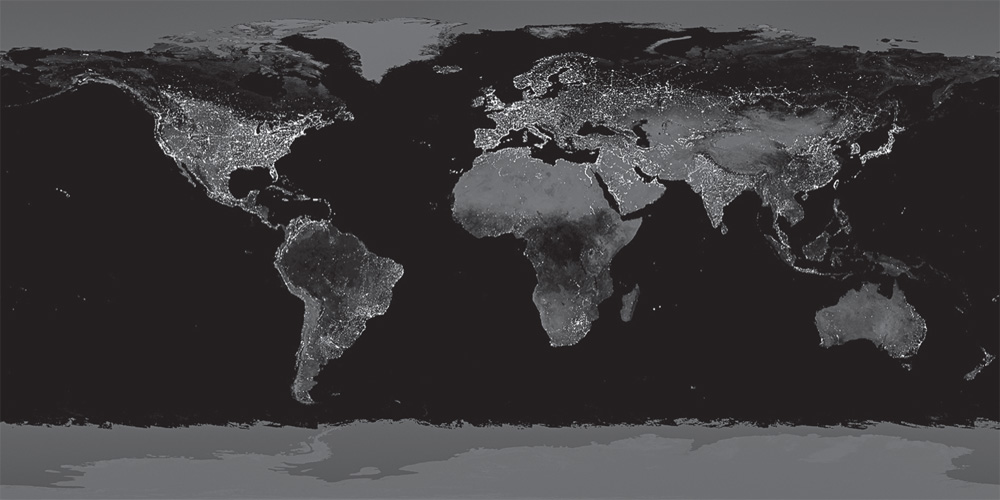1Overview

Image available at https://visibleearth.nasa.gov/view.php?id=55167/ (Accessed in August 2018).
Credit: Data courtesy Marc Imhoff of NASA GSFC and Christopher Elvidge of NOAA NGDC. Image by Craig Mayhew and Robert Simmon, NASA GSFC.
City lights show urbanized areas around the world. Although the density of lights is not necessarily proportional to the population density and degree of development, use of electricity reflects various aspects of social and economic activities. Energy intensity is higher in brighter areas of the earth such as Europe, Middle East, Southeast Asia, North America, parts of South America, and Oceania. Big metropolitan areas around the world are visible as bright light clusters. In the USA, the interstate highway network is detectable from the city lights. Dark spots in Africa, South America, Asia, and Oceania correspond to sparsely populated and less industrialized areas. Polar regions are entirely dark since they are not populated. According to the World Bank database (The World Bank Group [US] 2018), about 13% of the world population still does not have access to electricity. In darker areas of the earth, vital elements of modern society such as sanitary services, healthcare, education, transportation, water, and food supply are minimal.
1.1 Introduction
An energy system is a collection of elements that work together to supply the energy ...
Get Energy for Sustainable Society now with the O’Reilly learning platform.
O’Reilly members experience books, live events, courses curated by job role, and more from O’Reilly and nearly 200 top publishers.

